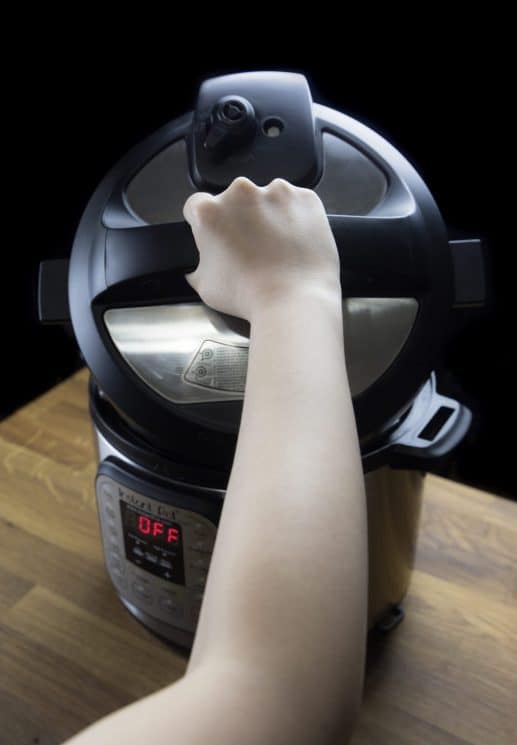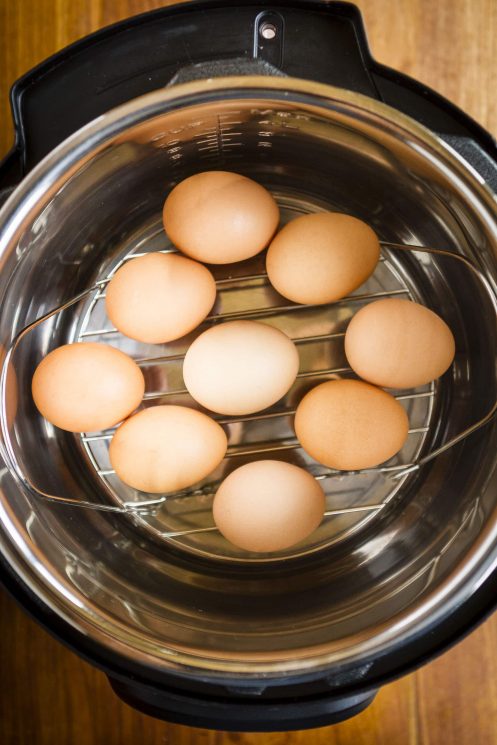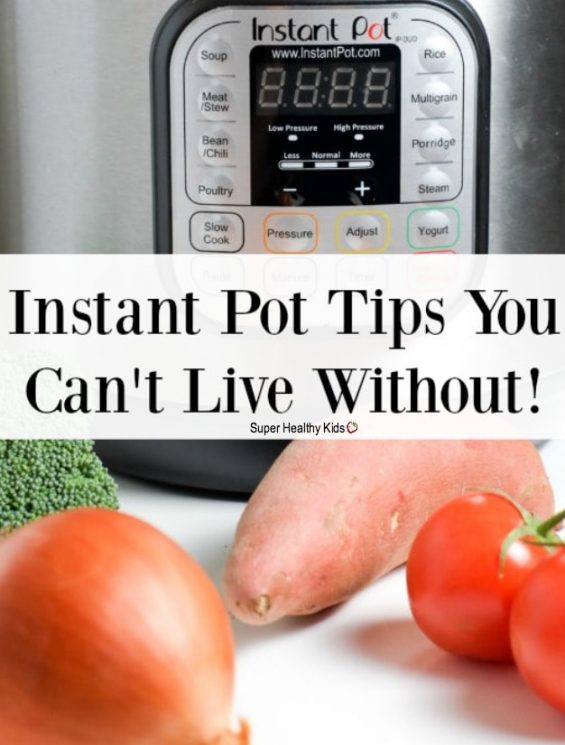Helpful Tips for Using Your Instant Pot
The amazing Instant Pot can be a bit intimidating when you’re first getting acquainted with it. But fear not, because once you use it a couple of times and get more familiar with it, you’ll realize that you wouldn’t want to live without it. Whether you’re just getting started with your Instant Pot or you’ve been pressure cooking for a while, we have Instant Pot tips to help you get through new user jitters as well as maximize your Instant Pot’s performance.
Ultimate Instant Pot Tips
-
Read your manual and keep it handy.
The Instant Pot’s appearance, with all of the buttons, can be overwhelming, so reading the manual, which spells out how to use it, will give you more confidence when testing it out. Also, if you keep your user manual handy, you can make sure that you are following all safety precautions.
-
Keep in Mind Total Cooking Time
Many recipes advertise a quick cooking time but fail to mention the time that it takes to get up to pressure (about 10 to 40 minutes) and the time to release the pressure (natural pressure release takes about 15 minutes) at the end of the recipe. Keep this in mind when you read a recipe description that boasts, for instance, that a whole chicken will be done in under 30 minutes.
-
Choose recipes wisely.

Start simple (for example, hard cooked eggs or vegetables) to get to know your pot. Then move on to well written recipes, such as this All in One Instant Pot Chicken and Brown Rice. The step by step instructions hold your hand as you use your pot to make an easy and delicious one pot meal. After you feel more comfortable, move on to more adventurous recipes if you’d like.
-
Zero minutes.
You can set your cook time for zero minutes, which is perfect for vegetables that cook quickly. This will have your Instant Pot come up to pressure then immediately turn off.
-
Sautéing.
Use the sauté function to sauté directly in your Instant Pot, which keeps you from having to dirty extra dishes. This function is so handy when you want to sauté vegetables or brown meat prior to cooking.
-
Say no to stove top.
Avoid putting your Instant Pot on the stove for use. It’s easy to accidentally turn on the wrong burner if you are doing some stove top cooking too, and you don’t want a burnt-bottomed Instant Pot.
-
Delayed cooking.
Do not use the timer function with perishable foods (such as meats, poultry, fish, milk) that should not be left at room temperature for hours. Delayed cooking is also not recommended for oatmeal, porridge, or other sticky and foamy foods.
-
Open the lid safely.

(Image Credit: Pressure Cook Recipes)
Make sure the pressure cooker program is completed or that you have pressed the “keep warm/cancel” button, then release the pressure either through quick release or natural release (discussed below) before attempting to remove the lid. When opening the lid after releasing the pressure, slowly tilt the lid away from you (and anyone else hanging out in your kitchen) so that the lid can direct the steam away from you. Never force the lid open.
-
Know your pressure release options.
- Quick release. Keep your face and hands away from the hole on the top of the steam release handle since the escaping steam can scald you. The rule of thumb is to use quick release for non-foaming foods, vegetables so that they don’t overcook, and when the pot is not filled to its maximum. Don’t use quick release for foods with a high starch content or with a large liquid volume since the food may splatter out with the steam, showering you and your kitchen.
- Natural release. Natural release just means you let your pot release pressure on its own. The rule of thumb is to use natural release for when the pot is filled to the Max line and for meats and foaming foods. When the pressure has been released, the float valve drops down.
-
Liquid lowdown.
Make sure that you have at least a cup of liquid in your pot. You total liquid can be a combination of broth, water, vinegar, et cetera.
-
Bulk cook.
Feel free to save even more time by cooking extra portions of foods that freeze well, such as beans, rice, or other foods that you frequently use for meals and freeze it into portions to use with other meals. Freeze the food flat in freezer safe bags in the portion that you would normally use. This way, if you need rice with your next Instant Pot meal, you’ll have it ready to add to your meal.
Using the steam function, you can successfully reheat foods. Traditional Cooking School has a video titled How Do You Reheat Food in the Instant Pot with lots of details on reheating. Most foods need only about five minutes to reheat once your pot comes to pressure.
-
Steam rack use.

(Image credit: Unsophisticook)
Use the steam rack to keep foods, such as hard cooked eggs and sweet potatoes, out of your cooking liquid and off the bottom of the pot. Also use it for pot-in-pot cooking or for reheating foods. To use a pot-in-pot method to cook, place your steam rack into your Instant Pot along with a cup of water. On the steam rack, you may place a heat proof dish containing the food you wish to cook. This method is usually used to cook foods that don’t contain much liquid, such as meatloaf.
-
Recipe conversion.
Make your favorite slow cooker meals Instant Pot friendly using Super Healthy Kids Ultimate Guide for Making Any Crockpot Recipe in an Instant Pot.
-
Frozen food use.
You can put frozen foods into the Instant Pot. Hurray! Using frozen foods will add to the time it takes to come to pressure and will add five to ten minutes to the total pressure cooking time.
-
It’s not done.
If you find that your meat hasn’t fully cooked once you’ve released the pressure, just cook five to ten additional minutes. It shouldn’t take long for your pot to come to pressure again since the food will already be hot.
-
Keep it clean.
Make sure that you keep your machine clean and that you check to make sure that the anti-block shield, steam release handle and float valve are not obstructed. Wash the lid and ring immediately after use to minimize odors. The lid and ring should be hand washed. The pot and steam rack may be cleaned in the dishwasher.
-
Foods not to use.
Don’t use milk in your pot unless you add it after pressure cooking. Also, add thickeners, like corn starch and flour, after cooking as well. The Instant Pot manual also recommends not to cook any foods that foam, froth or sputter (such as pearl barley, oatmeal or other cereals, applesauce, cranberries, split peas, noodles, rhubarb, macaroni, or spaghetti) in a pressure cooker.
-
Keep an eye on how much is in the pot.
Do not fill your pot over 2/3 full, and when cooking foods that expand, like dried beans, do not fill over ½ full so that the food has room to grow.
-
Speed it up.
Set your Instant Pot on sauté mode right when you take out your pot to preheat it. This allows your pot to warm up as you gather your ingredients. Press the off button to end the sauté mode once you are ready to select your pressure program
Once you’ve used your Instant Pot a few times, you’ll feel more comfortable and confident in exploring everything you can do with this handy kitchen tool. Feel free to share any tips you’ve discovered with us in the comments.


Natalie Monson
I'm a registered dietitian, mom of 4, avid lover of food and strong promoter of healthy habits. Here you will find lots of delicious recipes full of fruits and veggies, tips for getting your kids to eat better and become intuitive eaters and lots of resources for feeding your family.
Learn More about Natalie
What a great post! We are new to the instant pot but love it! Your tips will come in so handy though, thanks for posting!
Comments are closed.